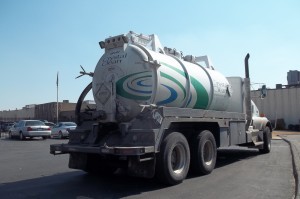 The regulations of the Pipeline and Hazardous Materials Safety Administration (PHMSA) include specific requirements for Shipper and Carriers of certain quantities of oil. The purpose of this article is to identify and explain the responsibilities of a Carrier of certain quantities of oil to complete and maintain a Response Plan. (more…)
The regulations of the Pipeline and Hazardous Materials Safety Administration (PHMSA) include specific requirements for Shipper and Carriers of certain quantities of oil. The purpose of this article is to identify and explain the responsibilities of a Carrier of certain quantities of oil to complete and maintain a Response Plan. (more…)

Response Plans Required for Certain Carriers of Oil
The Requirements of 49 CFR 130 for Oil Spill Prevention and Response Plans
Both the Shippers and Carriers of certain specified quantities of oil are required to comply with the regulations found at Part 130 of Title 49 of the Code of Federal Regulations. The purpose of this article is to identify and explain the purpose, scope, and requirements of 49 CFR 130 – Oil Spill Prevention and Response Plans of the PHMSA regulations. (more…)
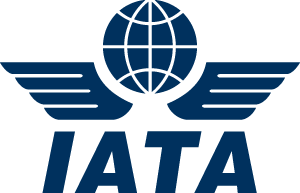
Shipper’s Responsibilities in the IATA Dangerous Goods Regulations
The transportation by air of hazardous materials – dangerous goods in the parlance of most of the international community – will likely require compliance with the Dangerous Goods Regulations of the International Air Transport Association (IATA).
The term “Shipper” is used in the IATA DGR in a similar manner as it is in the Hazardous Material Regulations of the USDOT/PHMSA: a Shipper is one who offers a dangerous good for transportation to an Operator – the person or business who operates the aircraft – who is a Member or associate Member of IATA or party to the IATA Multilateral Interline Traffic Agreement – Cargo.
The purpose of this article is to summarize and explain the requirements of a Shipper under the IATA DGR as detailed in Subsection 1.3 Shipper’s Responsibilities. (more…)
Obtaining a Uniform Hazardous Waste Manifest from a Registered Printer
The Uniform Hazardous Waste Manifest is a document required by both the PHMSA/USDOT and the USEPA for the off-site transportation of hazardous waste and PCB Waste from its point of generation to its final treatment, recycling, or disposal. But it’s not as easy as that…
- Federal regulations require the manifest be used for offsite transportation of hazardous waste generated by a Large Quantity Generator (LQG) and a Small Quantity Generator (SQG) of hazardous waste but not from a Conditionally Exempt Small Quantity Generator (CESQG).
- An authorized state may require the use of the uniform hazardous waste manifest from a CESQG.
- An authorized state may require the use of the uniform hazardous waste manifest for other wastes it has identified as hazardous.
- Any state may require the use of the uniform hazardous waste manifest for non-hazardous wastes.
- A waste transporter and/or the Treatment, Storage, and Disposal Facility (TSDF) may require the use of the uniform hazardous waste manifest as a condition of its acceptance.
The purpose of this article is to identify the responsibility of a hazardous waste generator to obtain the uniform hazardous waste manifest from a registered manifest printer. (more…)
Banned From Landfill Disposal in California
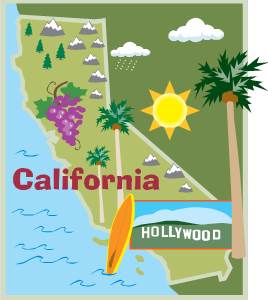
Generators of both RCRA hazardous waste and Non-RCRA hazardous waste in California must also be aware of the State’s ban on the landfill disposal of certain wastes. Take a look at the list below. Are any of these wastes in your trash or garbage? Is there even a possibility that they might be?
- Lamps – a universal waste subject to DTSC and USEPA regulations.
- Batteries – a universal waste subject to DTSC and USEPA regulations.
- Electronics – a universal waste subject to DTSC and USEPA regulations.
- Mercury-containing materials. – a universal waste subject to DTSC and USEPA regulations.
- Paints & solvents (latex & oil-based). – either a RCRA hazardous waste or a California-only non-RCRA hazardous waste.
- Non-empty aerosols. – a universal waste subject to DTSC and USEPA regulations.
- Asbestos – a California-only non-RCRA hazardous waste.
- Pressure treated lumber.
- Used oil filters. – a California-only non-RCRA hazardous waste.
- Used oil & antifreeze. – a California-only non-RCRA hazardous waste.
- Tires
- Needles & sharps.
- PCB ballast. – a California-only non-RCRA hazardous waste.
- Large metallic objects.
- Compressed gas cylinders.
- Household Haz Waste.
Source: UC Agriculture & Natural Resources Environmental Health and Safety Office: Managing Waste in California
Do you have questions about the management of RCRA hazardous waste, California-only non-RCRA hazardous waste, California universal waste, used oil, spent antifreeze or any one of a number of various wastes subject to DTSC regulations? Contact me or attend my one-day DTSC Hazardous Waste Seminar in Ontario, CA on June 25, 2015.
Daniels Training Services 815.821.1550 |
December 2014 – Rules & Regulations, Proposed Rules, and Notices Regarding the Management of Hazardous Waste and the Transportation of Hazardous Materials
On its website the US Government Printing Office makes a wealth of Federal publications available for review and download; one of these is the Federal Register.

Published by the Office of the Federal Register, National Archives and Records Administration (NARA), the Federal Register is the official daily publication for rules, proposed rules, and notices of Federal agencies and organizations, as well as executive orders and other presidential documents.
See below for a brief summary of announcements in the Federal Register by the US EPA on the subject of Hazardous Waste and the Pipeline & Hazardous Materials Safety Administration (PHMSA), Federal Railroad Administration (FRA), and the Federal Aviation Administration (FAA) of the US DOT on the subject of Transportation of Hazardous Materials.
The Federal Register is a great way to look down the road and see potential changes to the regulations long before they are put into effect (sometimes The Rulemaking Process takes years before a final rule is issued, if ever). Knowledge of these potential changes provides you with several advantages:
- Additional time to modify your business operations to comply.
- Awareness of on what topics the regulatory agencies intend to focus their efforts.
- The ability to register your concerns, complaints, suggestions, etc. in order to modify the proposed rule before a final rule is issued. It can be done, really!
- Make changes to your training program to account for changes that become effective before the next training cycle.
- Alert you to the need to re-train your employees prior to their next scheduled training cycle, if necessary.
- Keep you abreast of changes to the regulations that affect your business and/or your industry group.
Please note that this is my best effort to identify the relevant announcements in the Federal Register that may be of interest to generators of hazardous waste and shippers of hazardous materials. I encourage you to review the list of Federal Register publications yourself to ensure regulatory compliance.
December 1, 2014 through December 31, 2014
USEPA – US Environmental Protection Agency:
Publications not related to the management of hazardous waste, solid waste, universal waste, or used oil are not included here.
Rules and Regulations:
Fall 2014 Regulatory Agenda Pages 76771 – 76778 [FR DOC # 2014-28976] PDF | Text | More
Proposed Rules:
None
| Contact me with any questions you may have about the management of hazardous wasteDaniels Training Services815.821.1550Info@DanielsTraining.comhttps://danielstraining.com/ |
Notices:
Underground Injection Control Program; Hazardous Waste Injection Restrictions; Reissuance of a Petition for Exemption-Class I Hazardous Waste Injection; Pergan Marshall, LLC Marshall, TX Pages 73071 – 73071 [FR DOC # 2014-28810] PDF | Text | More
Twenty-Seventh Update of the Federal Agency Hazardous Waste Compliance Docket Pages 78850 – 78855 [FR DOC # 2014-30687] PDF | Text | More
FAA – Federal Aviation Administration:
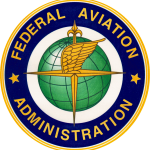 Publications not related to the transportation of hazardous materials are not included here.
Publications not related to the transportation of hazardous materials are not included here.
Rules and Regulations:
None
Proposed Rules:
None
Notices:
Eighteenth Meeting: RTCA Special Committee 225, Rechargeable Lithium Battery and Battery Systems Pages 76441 – 76441 [FR DOC # 2014-29909] PDF | Text | More
FMCSA – Federal Motor Carrier Safety Administration:
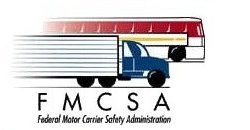
Publications not related to the transportation of hazardous materials are not included here.
Rules and Regulations:
None
Proposed Rules:
Minimum Training Requirements for Entry-Level Driver Commercial Motor Vehicle Operators; Establishment of a Negotiated Rulemaking Committee Pages 73273 – 73276 [FR DOC # 2014-28919] PDF | Text | More
Notices:
None
FRA – Federal Railroad Administration:
Publications not related to the transportation of hazardous materials are not included here.
Rules and Regulations:
None
Proposed Rules:
None
Notices:
None
PHMSA – Pipeline and Hazardous Materials Safety Administration:
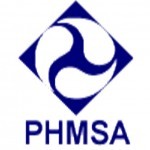 Publications not related to the transportation of hazardous materials are not included here.
Publications not related to the transportation of hazardous materials are not included here.
Rules and Regulations:
None
Proposed Rules:
None
Notices:
None
Information can be helpful but it’s useless if you are not able to make sense of it. You must be able to determine how any changes to the rules and regulations (final or proposed) will affect your operations, and communicate the necessary information to your personnel. I can help you to do that.
| Contact me with any questions you may have about the transportation of hazardous materials by air, highway, vessel, or railInternational and DomesticDaniels Training Services815.821.1550Info@DanielsTraining.com |
Please contact for a free training consultation to determine your regulatory requirements and how training can help you to attain and maintain compliance with the regulations of the US Environmental Protection Agency (and your state) and the PHMSA, FAA, FRA, & FMCSA of the US Department Of Transportation.
Former Texas Logistics Company Manager Sentenced for Falsifying Shipping Documents
The Bullet:
The deliberate falsification of HazMat shipping papers by a company official led to conviction and sentencing in a criminal court.
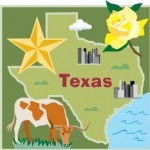
Who:
The Defendant is Mr. Ryan Thomas, former Logistics Manager for CES Environmental Services in Houston, Texas.
The case was investigated by EPA’s Criminal Investigation Division and the U.S. Department of Transportation, the Texas Commission on Environmental Quality, the Houston Police Department, the U.S. Department of Labor and the U.S. Coast Guard. It was prosecuted by the Department of Transportation with assistance of Department of Justice’s Environmental Crimes Section.
What:
Mr. Thomas was sentenced to 12 months’ probation, ordered to pay a $500 fine, and to serve 100 hours of community service.
Where:
The CES Environmental Services facilities in question are located in Houston and Port Arthur, TX.
Mr. Thomas was sentenced in U.S. District Court in Beaumont, Texas.
When:
Mr. Thomas was sentenced on July 14, 2014.
Why:
Mr. Thomas produced manifests that falsely indicated that three cargo tank motor vehicles of wastewater originated from the CES Houston plant when in fact, they were produced and shipped from the CES Port Arthur (PACES) plant. The PACES location had been placed on a moratorium after a November 3, 2008, accident in which a CES driver was overcome by vapors released during the offloading of wastewater. The disposal facility placed the moratorium on all loads of waste-water from the PACES location until the cause of the accident could be identified and new inbound load testing protocols were agreed to. Mr. Thomas’ actions sought to circumvent this moratorium.
How:

The deliberate falsification of HazMat shipping papers caused this case to be treated as a criminal case and not a civil. The USEPA has the authority to turn cases such as these over to the Department of Justice who then prosecutes criminal cases on their behalf.
Conclusion:
Usually, violations of Agency regulations result in civil penalties and forfeitures. In situations where deliberate falsification is suspected – such as this one – criminal prosecution may result. Whether civil or criminal, no person or company wants to subject itself to the problems that non-compliance can bring. Make certain that your facility is in compliance with the regulations of the USEPA, your state, and the USDOT for the cradle-to-grave management of hazardous waste and the transportation of hazardous materials. I can assist you with compliance in several ways:
Contact me with any questions you may have about the transportation of hazardous materials Daniels Training Services 815.821.1550 |
- Contact me with a question about the regulations or for a free training consultation.
- Subscribe to my Monthly Newsletter.
- Arrange for one of my many training options to ensure all of your personnel are familiar with the applicable regulations.
Like this article?
Subscribe to my Monthly Newsletter
No marketing emails!
The Description of a Limited Quantity of a Hazardous Material on a Shipping Paper
[slideshare id=35178611&doc=adddesc172-140527124546-phpapp01]
The Connecticut Department of Energy and Environmental Protection – Pollution Prevention View (P2 View) for Spring 2014
This quarterly newsletter from the CT DEEP is a great source of information for everyone, not just businesses in Connecticut. It contains helpful information on pollution prevention activities that can be applied at home or at work nationwide.
Contents for Volume 14, Issue 2 – Spring 2014:
- Bon Appetit: A New Life for Leftovers – Read the statistics about food waste and its impact on our environment. Celebrate the companies that are already taking steps to reduce food waste and its disposal in landfills. Learn a simple thing all businesses and homeowners can do to reduce the disposal of compostable food waste in landfills.
- Businesses, Institutions, and Agencies Getting Waste Wise – Waste Wise is a waste reduction program managed by the USEPA. Persons may establish waste minimization goals for their enterprise. Resources are available from the USEPA for participants. Those meeting their goals are acknowledged by USEPA and can promote their company as “Waste Wise”. Read more about USEPA’s Waste Wise program.
- Ask Eartha – Read Eartha’s response to a question about microbeads. Spoiler: They’re not good.
View the entire P2 View Newsletter for Spring 2014

Guidance from the USEPA: Voluntary Guidelines for Methamphetamine Laboratory Cleanup

Breaking Bad may seem like a lot of fun and games, but what is often overlooked is that someone had to cleanup the mess Walter and Jesse made. The discovery of a meth lab, or the waste from one, provides law enforcement with a significant amount of hazardous waste to contain, manage, transport, and dispose. Unfortunately, the generators of the waste are not often the type that are concerned about the environment or take heed of the USEPA regulations regarding the “Cradle-to-Grave” management of hazardous waste. That leaves state and local law enforcement holding the bag and responsible for the disposal of the waste. Sometimes a small police force with a limited budget may find itself subject to the RCRA regulations as a large quantity generator of hazardous waste due to its discovery or closure of meth labs.
In an attempt to assist law enforcement the Methamphetamine Remediation Research Act of 2007 required USEPA to develop guidelines for the cleanup of meth labs and the disposal of waste associated with them. These are voluntary guidelines and are based on the best currently available knowledge in the field of meth lab remediation. A partial list of what the guidelines address includes:
- Hiring a contractor
- Ventilation
- Worker safety and health
- Removal of contaminated materials
- Waste characterization and disposal procedures
- Detergent-water solution washing
- Outdoor remediation
- Recommended best practices for the remediation of specific materials (eg. walls, ceilings, floors)
- Methods of collecting samples from a structure to identify the presence of methamphetamine
- Additional information and resources are included in the Appendices
From the USEPA Emergency Response website (here):
Guidelines Questions and Answers:
Why is EPA publishing these voluntary guidelines?
The Methamphetamine Remediation Research Act of 2007 required EPA to develop guidelines for remediating former methamphetamine labs. This document provides those guidelines for States and local agencies to improve “our national understanding of identifying the point at which former methamphetamine laboratories become clean enough to inhabit again.” The legislation also required that EPA periodically update the guidelines, as appropriate, to reflect the best available knowledge and research.
Who should use these guidelines?
The guidelines are geared towards state and local government personnel charged with remediating or otherwise addressing former methamphetamine (meth) labs. This document helps disseminate the best available knowledge and research on meth lab remediation and will also prove useful to cleanup contractors and could be a resource for homeowners.
Does this document create new regulations for meth lab cleanup?
EPA prepared this document based on best current practices to provide voluntary cleanup guidelines to state and local governments, cleanup contractors, industrial hygienists, policy makers and others involved in meth lab remediation. It does not set requirements, but rather suggests a way of approaching meth lab remediation. Those using this document should also consult their appropriate municipal, county or state guidance documents, regulations and statutes. This document is not meant to supersede municipal, county or state guidance documents, regulations or statutes (however this document may be useful as they develop and/or review and revise their own guidelines).
Voluntary Guidelines for Methamphetamine Laboratory Cleanup
The generation of a hazardous waste, even in a legal environment such as a factory, has its own risks and dangers. Be sure you are in compliance with the regulations of the USEPA and those of your state if you are a generator of hazardous waste (Large Quantity Generator, Small Quantity Generator, or Conditionally Exempt Small Quantity Generator). I provide the training in any format you require (Onsite, Seminar, Webinar, or Learning Management System) to ensure compliance and a happy ending.
Daniels Training Services 815.821.1550/Info@DanielsTraining.com/www.DanielsTraining.com |

